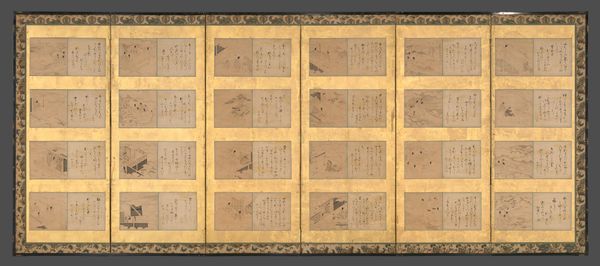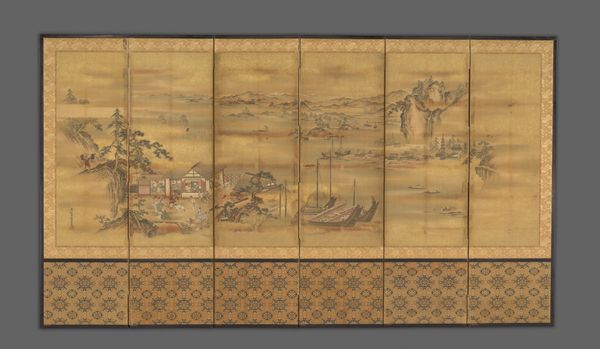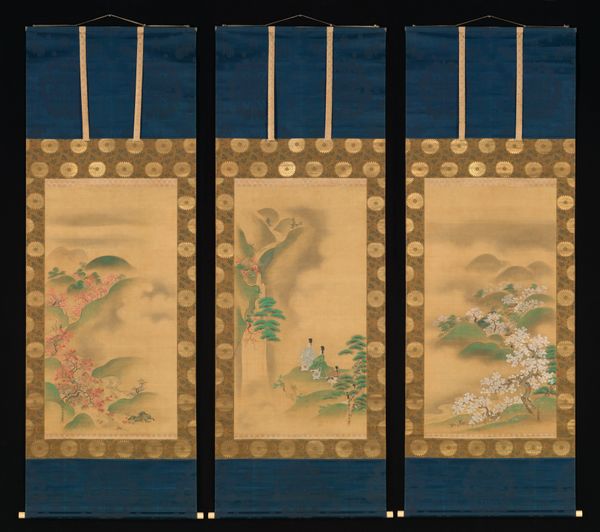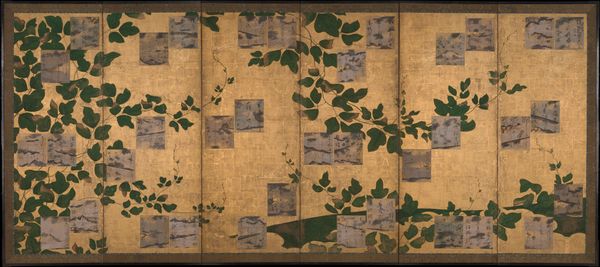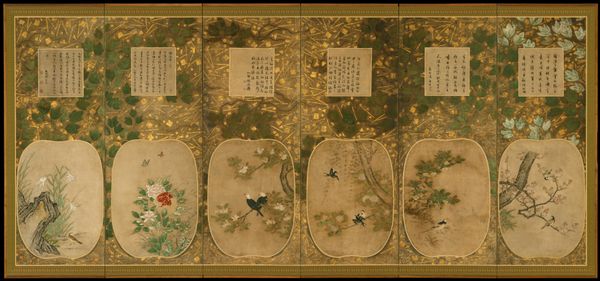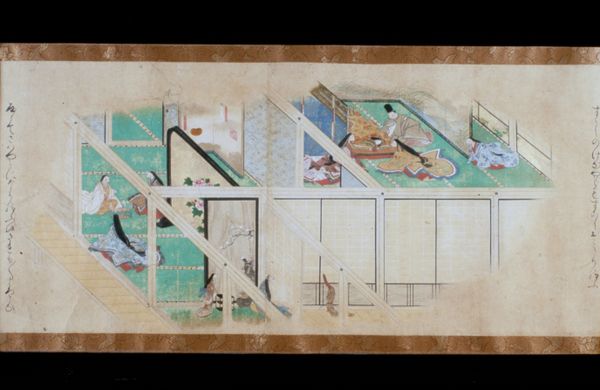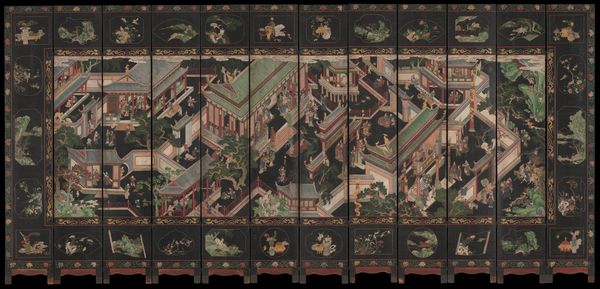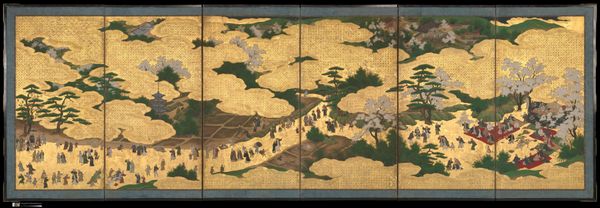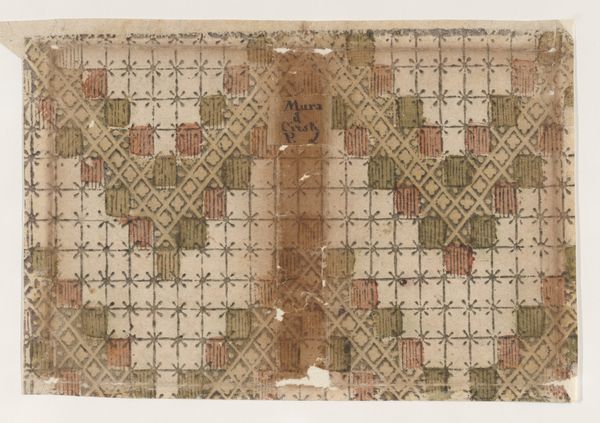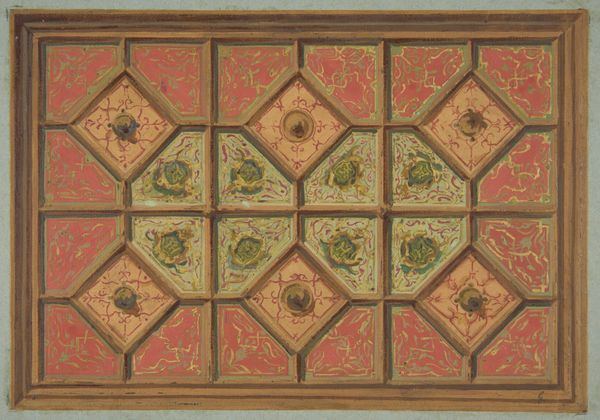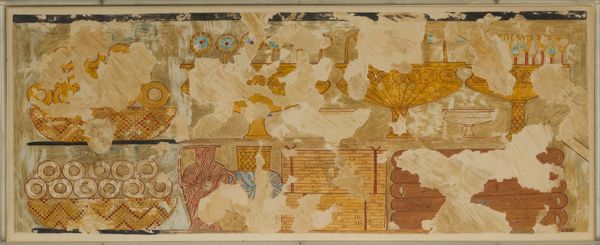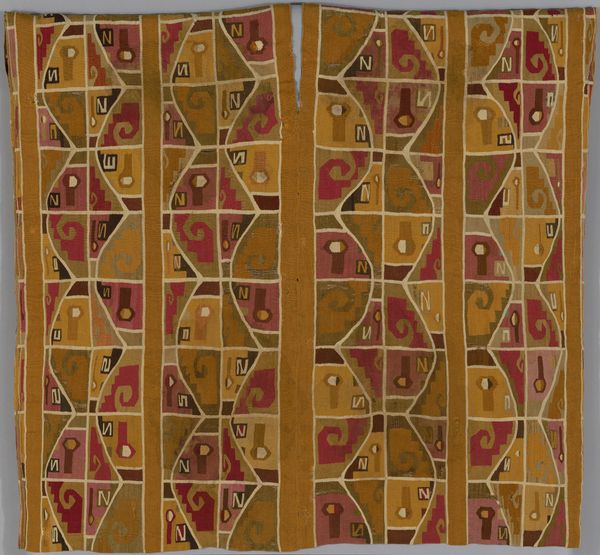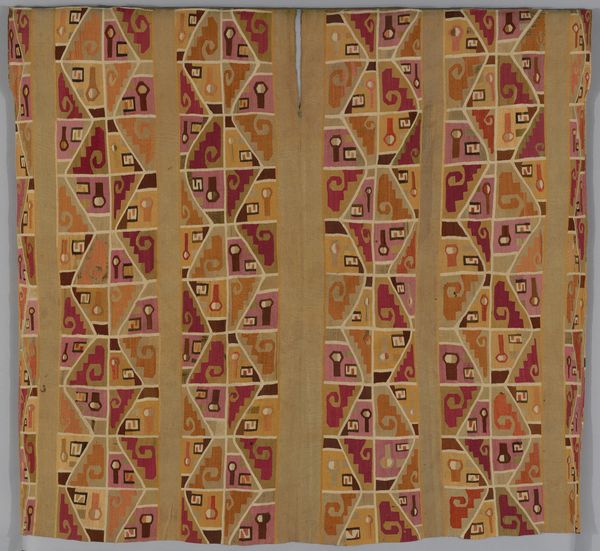![Scenes from The Tale of Genji [left of a pair] by Tosa Mitsunari](/_next/image?url=https%3A%2F%2Fd2w8kbdekdi1gv.cloudfront.net%2FeyJidWNrZXQiOiAiYXJ0ZXJhLWltYWdlcy1idWNrZXQiLCAia2V5IjogImFydHdvcmtzLzg5YzU1NTc1LTAzZTgtNGZmZC1hYzdkLTJiZDlhYzUwNWQwYy84OWM1NTU3NS0wM2U4LTRmZmQtYWM3ZC0yYmQ5YWM1MDVkMGNfZnVsbC5qcGciLCAiZWRpdHMiOiB7InJlc2l6ZSI6IHsid2lkdGgiOiAxOTIwLCAiaGVpZ2h0IjogMTkyMCwgImZpdCI6ICJpbnNpZGUifX19&w=3840&q=75)
Scenes from The Tale of Genji [left of a pair] c. 17th century
0:00
0:00
tempera, painting, mural
#
narrative-art
#
tempera
#
painting
#
asian-art
#
japan
#
wooden texture
#
history-painting
#
mural
#
yamato-e
Dimensions: 61 1/4 × 139 3/8 in. (155.58 × 354.01 cm) (image, with silver)67 1/2 × 145 5/8 × 3/4 in. (171.45 × 369.89 × 1.91 cm)
Copyright: Public Domain
Curator: At first glance, it's like glancing at fragments of memory. Golden grids, small, like windows looking out on hazy scenes... It feels distant and beautiful, a little sad, maybe? Editor: Here we have “Scenes from The Tale of Genji,” dating to around the 17th century, a tempera painting attributed to Tosa Mitsunari, housed here at the Minneapolis Institute of Art. The piece is a screen, meant to be both decorative and to illustrate a specific narrative. What interests me is the grid: almost an industrialized application across such traditionally refined subject matter. Curator: Oh, "industrious" is a good word! It reminds me of painstakingly crafting a poem out of found objects... Taking something grand like the Tale of Genji and compressing it into these tiny moments, with the blocks. There's reverence there, but also this playful deconstruction, no? Editor: Playful is a strong word. These screens, especially those depicting classical literature, were luxury commodities. The gold leaf isn’t just pretty, it’s capital! And the labour! Just imagine the repetitive work of applying that delicate gold ground, section after section... Curator: Ah, right, it is decorative art at the core. I am always so lost in stories when I look at it! Seeing the tempera, which is essentially egg-based paint gives each panel of the narrative such depth and life even centuries after they were set on the panels. It brings to life the Yamato-e style of this period so gorgeously, truly capturing courtly life. Editor: Yamato-e evolved specifically as a Japanese painting style distinctly from Chinese influences. Considering the intensive materials needed and the artistic skill involved to bring even single panel together, it's so reflective of elite consumption habits... Think of the artisans, likely anonymous, whose skilled work underpinned this display of wealth and taste. Curator: Mmm. Maybe "bittersweet" is more accurate than "sad". I find there's always a kind of melancholy when you look at how art transforms under societal pressure or cultural weight. Editor: Exactly! That push and pull between the intimate hand and mass social processes… you can really *feel* it here. Thanks for making this experience insightful, with all your lovely insights. Curator: Likewise! Looking through that lens reminds us to see past the beauty.
Comments
minneapolisinstituteofart almost 2 years ago
⋮
Pictures and short passages of text brushed on 108 small squares of paper arranged on the surface of these screens represent the entirety of The Tale of Genji, with a text-image pairing for each of the Tale’s 54 chapters. Reading the passages of classical Japanese written in elegant calligraphy, or identifying a specific scene from the Tale and recalling the characters and dramas involved, could provide hours of fun for the screens’ owners and guests. But the screens could just as easily serve simply as a luxurious gold-and-silver backdrop for a gathering
Join the conversation
Join millions of artists and users on Artera today and experience the ultimate creative platform.
